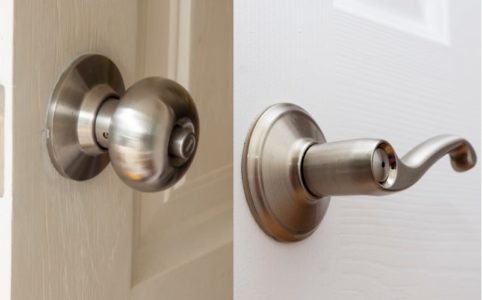Get a handle on your handle: knob or lever?
When purchasing door hardware for your home, there are several decisions that need to be made, such as the desired level of security, privacy issues, the design style of your home, and the finish. One additional decision is whether to purchase knobs or levers. Each of these styles of door hardware has properties that can make it more, or less, appropriate, depending on your needs.
In general, levers provide slightly more ease of access thanks to the singular downward motion required to operate them. Levers were originally created and designed for hospitals and healthcare facilities to make it easier for healthcare professionals to access rooms as they moved medical supplies, IV stands, medical equipment, or hospital beds quickly from one area of the hospital to another. After their debut in medical care, people liked the look of these lever-type handles, and they have become a mainstream design option for offices and residences. The sleek design appeals to many and the elegant curve creates a distinctive look, especially when they are used in sets on French doors.
Doorknobs require a full engagement with one’s hand, followed by a twisting or turning motion to operate, but that does not make them less popular than levers. In fact, such doorknobs are more secure, especially if you have small children or pets who are likely to jump up onto a door and open it accidentally. While doorknobs are available in all types of finishes, styles, and shapes—from traditional to modern—they tend to be used in more classic or traditional style homes. For more information on what to look for when selecting your door hardware, consult our style guide here.
Knobs and levers may be functionally the same, but it is always best to consider exactly what you need before buying new hardware. To better understand how a product holds in the categories of security, durability and finish, always look for the BHMA Certified® Secure Home™ label, which provides a rating of Good (C), Better (B) or Best (A) in each area. Learn more about the label here.

